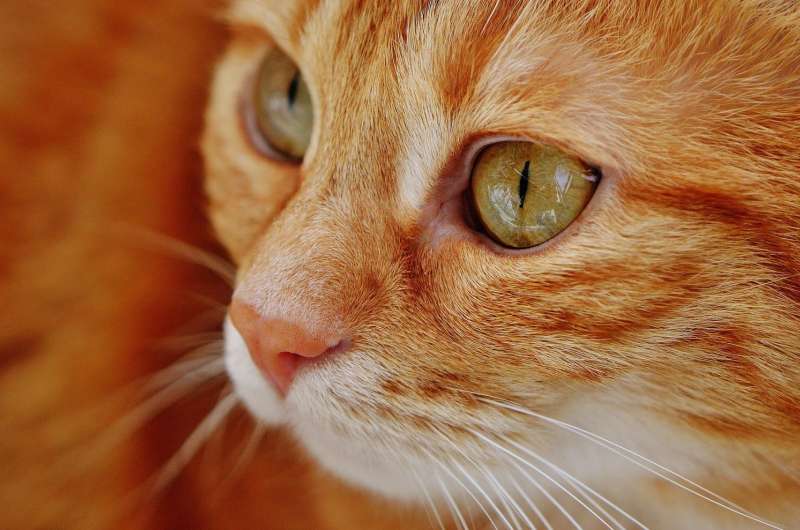This article has been reviewed according to Science X's editorial process and policies. Editors have highlighted the following attributes while ensuring the content's credibility:
fact-checked
trusted source
proofread
A closer look into cryptococcal fungal infections in pets

Allowing pets to roam outdoors can seem like harmless fun, providing them with exercise, mental stimulation, and a chance to explore.
Some environments, however, pose hidden dangers that pet owners may not immediately recognize, such as the risk of cryptococcal fungal infections—which can infect the lungs, brain, and other parts of the body.
Dr. Sara Lawhon, director of the Clinical Microbiology Laboratory for the Veterinary Medical Teaching Hospital at the Texas A&M School of Veterinary Medicine and Biomedical Sciences, provides insight into this type of fungal infection and why pet owners should be aware of the potential harm it poses to their pets—and especially cats.
Susceptibility and signs
Cryptococcal fungal infections are caused by the Cryptococcus species of fungi, most commonly Cryptococcus neoformans and Cryptococcus gattii. These fungi are most naturally found in warm and humid environments, particularly where soil, decaying organic material (such as wood, leaf litter, and compost), and bird droppings are present.
"Both cats and dogs can develop serious, even life-threatening, cryptococcal infections when they inhale the spores of the fungi, but this type of infection is more commonly associated with cats," Lawhon said. "Cats of all ages, breeds and sex can be affected, and infections have been reported in both indoor and outdoor cats."
While outdoor cats are more likely to be exposed to the fungi, owners or other animals can bring contaminated materials on their shoes or clothes, introducing the fungus to indoor cats.
The most common form of cryptococcal fungal infections in cats affects the nasal cavity and sinuses, with early symptoms including swelling of the nose and face.
"Cats with this form of the infection can develop deep, non-healing ulcers of the skin and chronic nasal discharge that is clear, bloody, or full of pus; inflammation of the nasal tissues may result in sneezing or difficulty breathing as well," Lawhon said. "Though not typically painful, C. neoformans can cause skin lesions including nodules in the skin, which are small, raised bumps."
When cats have nasal cryptococcosis, Lawhon says they can lose weight, not only due to effects of the fungus on the body, but also because of their decreased sense of smell and interest in food.
Infections that are not promptly addressed may spread to other parts of the body, including in the lungs or central nervous system.
"Cats with disease in their central nervous system can specifically experience blindness, seizures or changes in their behavior," Lawhon said. "In some cases, cats will continue to develop the disease throughout the rest of the body."
Proactive veterinary and owner care
It is important for owners to seek veterinary care as soon as they notice any concerning symptoms in their cats because, as Lawhon pointed out, it can be harder to treat patients once the infection has spread to the central nervous system or throughout the body.
"The outlook for patients with nasal cryptococcosis is often better but usually requires several months of treatment with antifungal drugs," Lawhon explained. "Veterinarians will diagnose cryptococcal fungal infections based on the patient's history and clinical signs while confirmation of the diagnosis is made by testing samples from the affected areas or identifying cryptococcal proteins in a blood sample."
There is currently no vaccine available for cryptococcal fungal infections, making prevention efforts all the more important.
"Limiting a cat's exposure to environments with decaying plant material and bird droppings is likely to reduce the risk of infection," Lawhon said.
Outdoors can be a source of joy and exploration for pets as long as owners can ensure their pet's safety and well-being. By understanding the signs of cryptococcal fungal infections, cat owners, in particular, can act swiftly to seek veterinary care and improve the outcome for their beloved pets.
Provided by Texas A&M University




















